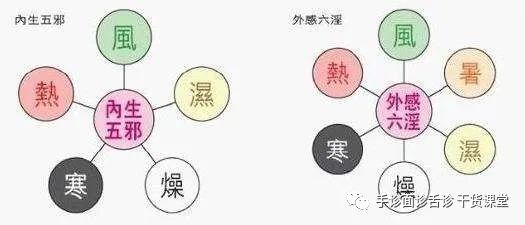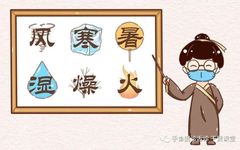Hello everyone, I am Teacher Gao Wen. Today, I will share with you about the “Six Excesses” among the factors that cause disease in the human body.

What are the Six Excesses?
The Six Excesses refer to the six types of external pathogenic factors: wind (feng), cold (han), heat (shu), dampness (shi), dryness (zao), and fire (huo). These are the six different climatic changes in nature.
These six natural climatic changes are also necessary conditions for the survival of all living beings. Over time, humans have gradually recognized their patterns and characteristics, and while actively transforming nature, they have also developed a certain adaptability. These six normal climatic changes are also referred to as the Six Qi.
Therefore, under normal circumstances, these six different climatic changes do not cause disease. However, when the climate is abnormal, changes rapidly, and the body’s righteous qi is relatively weak and cannot adapt, these Six Qi can invade the body and become pathogenic factors.
For example, a sudden drop in temperature, significant temperature differences, or sudden strong winds and heavy rains can easily lead to disease in the human body.
As stated in the Suwen: The Great Discussion on the True Essentials: “All diseases arise from wind, cold, heat, dampness, dryness, and fire, as they transform and change.” Thus, the “Six Qi” that can cause disease in the human body is referred to as the “Six Excesses.”
Since the Six Excesses are considered improper qi, they are also known as the “Six Evils.” They belong to a category of pathogenic factors known as external pathogens.
The characteristics of diseases caused by the Six Excesses generally include the following:
1. They are often related to seasonal climate and environmental conditions. For example, wind diseases are more common in spring, heat diseases in summer, damp diseases in late summer or in damp areas, dryness diseases in autumn, and cold diseases in winter.
2. They can cause disease alone or often combine to cause harm. For instance, wind-cold colds, damp-heat diarrhea, and wind-cold-damp bi syndrome.
3. They can influence and transform each other. During the disease process, the Six Excesses can interact, and under certain conditions, their nature can change. For example, cold evil can transform into heat, and prolonged heat and dampness can transform into dryness and injure yin.
4. The invasion pathways. They often invade the body through the skin, or enter through the mouth and nose, or both simultaneously, hence the term “external invasion of the Six Excesses,” and the diseases caused are referred to as “external diseases.”
From today’s clinical practice, in addition to climatic factors, the Six Excesses also include biological (such as bacteria, viruses, etc.), physical, chemical, and other pathogenic factors acting on the body, which are reflected in pathological responses. This method of summarizing pathogenic factors with the Six Excesses and combining them with the body’s responses to study the occurrence and development of diseases, although not very detailed, is a relatively correct approach.
Moreover, in clinical practice, there are often certain conditions that are not caused by the invasion of external Six Excesses, but rather due to dysfunction of the internal organs, which can form similar pathogenic qi (excluding heat evil) to the Six Excesses. These are prefixed with the word “internal” to distinguish them, such as internal wind, internal cold, internal dampness, internal dryness, and internal fire.

Since they are internally generated, they are referred to as “internally generated Five Evils” or “internally generated Five Qi.” The internally generated Five Evils and the external Six Excesses are often interconnected and influence each other during the disease process.
How to understand:
This sharing may be a bit difficult for some partners without any foundation in TCM health preservation. Here, I will provide a simple summary with examples. For instance, when we go out in winter and are exposed to strong wind and cold, the body is easily invaded by wind-cold, leading to wind-cold colds or joint stiffness, causing a series of symptoms. At this time, it is classified as wind-cold evil.
For example, in summer, when the weather is hot and humid, we are prone to heat stroke in high temperatures, leading to symptoms such as vomiting, headache, chest tightness, and fainting. The predominant evil at this time is heat-damp evil.

For example, in autumn, when the weather is particularly dry, the skin can also become very dry, making the body susceptible to dryness and fire, leading to symptoms such as dry throat, sore throat, and even nosebleeds. The predominant evil at this time is dryness-fire evil.
You can understand and imagine that these six climatic evils are important factors that often lead to illness throughout the four seasons of spring, summer, autumn, and winter.

If this article has been helpful to you, feel free to follow our public account to receive more practical health preservation knowledge. You can also share it with your friends to benefit more health-conscious individuals from your sharing. 🙏🙏
Writing is not easy, like + see again, support a bit~

